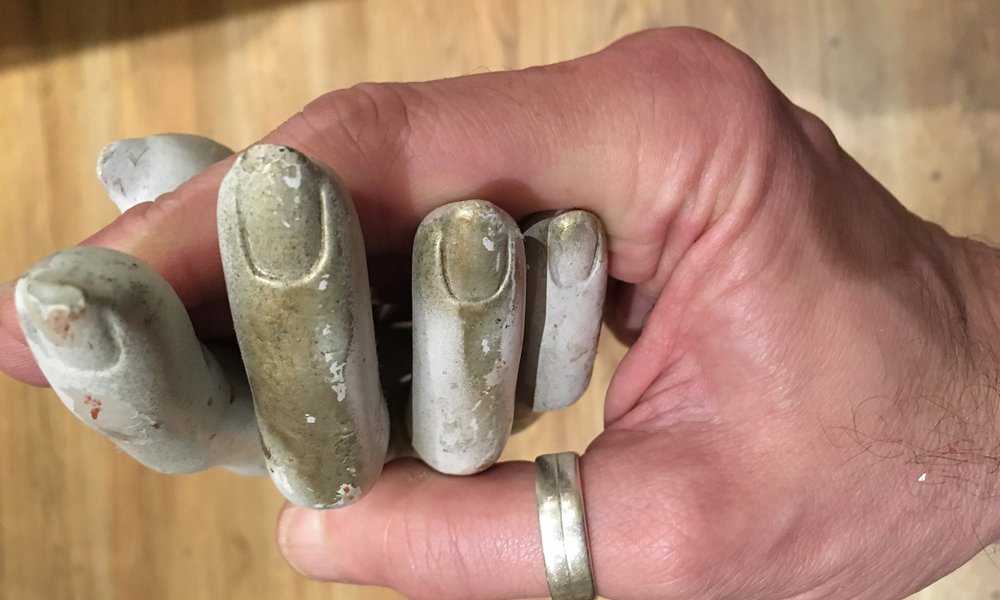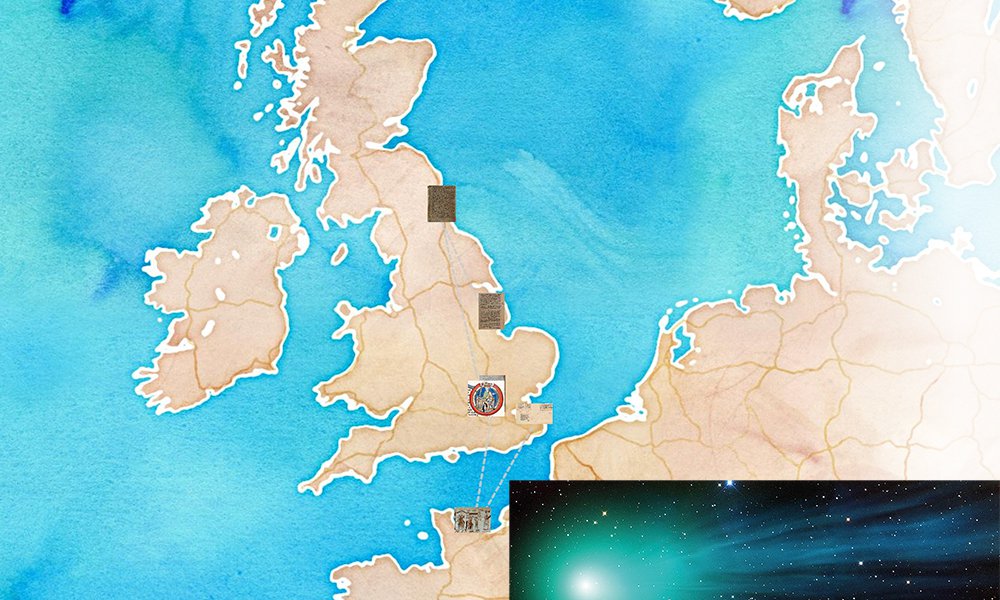South African jazz cultures and the archive: the playlist
by Jonathan Eato and Nduduzo Makhathini
20 Jun 2018
(1) ‘uMsenge’ Tete Mbambisa
From the 2012 album Black Heroes (JISA 001)
Bra Tete Mbambisa is a pianist and composer, originally from Duncan Village, eMonti, but now resident in Cape Town. He contributed extensively to the South African Jazz and the Archive initiative, as an expert interviewee in both English and isiXhosa, a musician who gave several concerts and made a recording as part of the project, and as an educator, resident at the University of KwaZulu Natalsa.
uMsenge is the Xhosa and Zulu name for trees of the Cussonia genus, which are widely used throughout Southern Africa in traditional medicine. The tree has, in Bra Tete’s words, ‘something like milk, so they call it Umsenge Mabele.’ This is perhaps one of the farthest travelled of all Tete Mbabmsia’s compositions: it has been recorded as a quartet by The Blue Notes in London and in a solo piano version by Chris McGregor in Paris. Although first recorded in 1962 by The Four Yanks, it was originally written as an instrumental for Ronnie Beer’s band The Swinging City Six, which featured Bra Tete on piano. The lyrics as sung by The Four Yanks are ‘The Milktree has been chopped down, Come respected elders, Listen to the voices, Where are the elders? Here are the young men, Who have been killing one another, What is happening?’
This solo piano version is from Bra Tete’s solo CD Black Heroes, recorded in the Fismer Hall at Stellenbosch University, but you can also listen to the 1962 version as recorded by The Four Yanks. The Four Yanks recorded this for Gallo Africa and it formed one side of a 78rpm release.
My book chapter ‘A Climbing Vine Through Concrete: Jazz in 1960s Apartheid South Africa’[1] is closely associated with the South African Jazz Cultures and the Archive project and features a case study where several versions of Bra Tete’s uMsenge are used to explore how much creative freedom artists were able to leverage under apartheid.
(2) Amathambo Nduduzo Makhathini
From the 2017 album iKhambi (Universal CDRBL 895 119)
Pianist, composer and healer Nduduzo Makhathini, originally from Umgungundlovu in KwaZulu Natal, is currently resident in East London. He is head of the Department of Music at the University of Fort Hare and has also been involved in the South African Jazz Cultures and the Archive project from the outset. Most of his work is strengthens connections between his beliefs in African modes of spirituality and his practice as an improviser. His latest release iKhambi was named best jazz album at the 2018 South African Music Awards. It was recorded at the University of York, UK, as part of South African Jazz Cultures and the Archive) with some overdubs done in various studios in South Africa. This video was conceptualised by Makhathini himself and created by Garth Von Glehn.
In its broadest sense, Amathambo (the bones) tries to interrogate the complexities faced by Africans in urban settings and their need for practicing certain rituals. As a result of these entanglements, a disconnection arises between the ancestry realm and theirs. The song is based on a true story about a man who had lost touch with the ancestral practices of his forefathers. As a result, various aspects of his life were suffering, as a sign of anger from his ancestors. After many years, he went back to his rural home to seek help from isangoma (a healer). Following a number of rituals, the troubled man’s dreams and visions were reignited and he began to receive light from his ancestors.
(3) Love Remembers Thandi Ntuli
From the 2014 album The Offering (independent release)
Pianist, composer and singer Thandi Ntuli is from Soshanguve, Pretoria. She is a graduate of the University of Cape Town’s prominent Jazz Performance programme, released the The Offering independently in 2014, and is the 2018 Standard Bank Young Artist for jazz.
One of the themes that was explored during the South African Jazz Cultures and the Archive project was the role that women have played in South African jazz. Whilst there is a wide acknowledgement of the many contributions made to the music by female singers – think Pinise Saul, Sathima Bea Benjamin, Vuyiswa Ngcwangu, Tutu Puoane, Thandi Klaasen, Dorothy Masuka, Zoë Modiga et al – artists such as Thandi Ntuli, trombonist and singer Siya Makuzeni (2016 Standard Bank Young Artist for jazz), bassist Romy Brauteseth, and drummer Annemie Nel remind us that jazz music need not be the exclusive male preserve we might stereotypically assume.
Excerpts from the ‘Women In South African Jazz’ panel chaired by Dr Lindelwa Dalamba can be viewed as part of our exhibit, and features Hazel Miller (Ogun Records founder), Maxine McGregor (author and promoter / manager for The Blue Notes), alongside vocalists Pinise Saul and Vuyiswa Ngcwangu.
(4) Mamazala Zim Ngqawana
From the 1999 album Ingoma (Sheer Sound SSCD 053)
Multi-instrumentalist and composer Zim Ngqawana (1959-2011) was born in iBhayi, Port Elizabeth and was one of the first graduates of the jazz programme established by Darius Brubeck and colleagues at the University of KwaZulu Natal. Bra Zim released four highly influential albums on Sheer Sound that explored the nexus of contemporary jazz, improvised music and the folk music of the amaXhosa. He founded the Zimology Institute based outside Johannesburg and worked with a number of musicians who have since risen to prominence, including Herbie Tsoaeli, Nduduzo Makhathini, Ayanda Sikade, Kyle Shepherd, and Shane Cooper. Latterly he also worked internationally in what might be described as free improvisation contexts, notably with US musicians Matthew Shipp, William Parker, and Nasheet Waits.
You can hear an interview with Bra Zim as part of our exhibit, where he discusses the problem of thinking about his work through the medium of the English language. This is a problem that several musicians highlighted during the project, brought into stark relief when we consider Ngũgĩ wa Thiong’o’s arguments about language, culture, and colonisation.
(5) Mandisa The Brotherhood of Breath (composer Chris McGregor)
Footage from the 2018 South Coast Jazz Festival
Pianist and composer Chris McGregor (1936-1990) grew up in the Eastern Cape and was part of the celebrated interracial group The Blue Notes, who were at the forefront of progressive jazz in South Africa during the 1960s. Following an invitation to play at the Antibes Festival they managed to secure travel documents from the apartheid government and so began a long exile in Europe. For McGregor this was predominantly in the UK, later France.
One of McGregor’s musical loves was Duke Ellington. Having recorded with a big band in South Africa in 1963, he initiated the formation of a large ensemble in the UK. The Brotherhood of Breath brought together a number of South African exiles and progressive musicians from the UK in what became one of the most influential large ensembles in UK jazz history. Whilst the band is often remembered for its signature combination of freewheeling improvisation, South African folk influences, and big band jazz, later incarnations reflected McGregor’s desire to return to a performance style that represented the composed material more closely.
Tenor saxophonist Frank Williams (on the far left of the saxophone section in this video) contributed to the South African Jazz Archives project as an expert interviewee, and his role in preserving performing materials of McGregor’s compositions was crucial in enabling work on forthcoming critical editions of the music, edited by the late Ernest Mothle (1941-2011, bass player with the Brotherhood of Breath), Frank Williams and Jonathan Eato.
Maxine McGregor wrote about Chris McGregor, The Blue Notes, and The Brotherhood of Breath in her book Chris McGregor and the Brotherhood of Breath.[2] She was also on the Women In South African Jazz panel hosted by South African Jazz Cultures and the Archive.
(6) Dream State Kyle Shepherd
From the 2014 album Dream State (Sheer Sound SLCD 301)
Pianist and composer Kyle Shepherd is a Cape Town-based musician who has been at the forefront of South Africa’s jazz music scene for a number of years. He has also recently won the 2018 South African Humanities and Social Sciences Award for his film score to Noem My Skollie.
Whilst his early recordings placed his creative signature firmly in the Western Cape – notable influences being Abdullah Ibrahim, and the music of the Kaapse Klopse – he has also explored the musical legacy of the San and Khoi peoples, notably on his album South African History !X. Having paid his musical respects in earlier projects Dream State takes the listener to another side of Shepherd’s creativity – one where euphoric melodies and driving contemporary grooves are marshalled by the urbane sophistication of international contemporary jazz.
Shepherd was part of the South African Jazz Cultures and the Archive team from its inception, primarily as a researcher at the University of Stellenbosch.
(7) Khanya Apho Ukhona Louis Moholo-Moholo Octet
From the 1978 album Spirits Rejoice (Ogun OG 520)
Cape Town-based drummer Louis Moholo-Moholo is the only surviving member of The Blue Notes, the group of South African exiles that had such a radical impact on the UK music scene when they arrived in London in 1964. Much of his recorded legacy has been released by Ogun Records, the company founded by Hazel Miller and her husband the bassist Harry Miller (who is also featured on this recording alongside bassist Johnny Dyani from The Blue Notes).
This track Khanya Apho Ukhona translates from isiXhosa as ‘Shine Wherever You Are’ and features British musicians who regularly collaborated with Bra Louis, notably pianist Keith Tippett and saxophonist Evan Parker.
The South African Jazz Cultures and the Archive event held in Cape Town – and organised jointly with Nkululeko Mabandla from the Centre for African Studies at the University of Cape Town – was focussed on Bra Louis’s musical legacy, and clips from this are included in our Summer Showcase exhibit.
(8) Seliyana Nicky Schrire (music and lyrics Victor Ntoni)
From the 2013 album Space and Time (independent release)
There is a beautiful way in which Schrire tells the story of home (South Africa) in a faraway land (the US). The way she delivers this piece demonstrates, in such profound ways, the futures and legacies of jazz in South Africa. It is also crucial to think about Schrire’s journey; she is South African, born in London, and at the age of five moved home to South Africa, before later travelling to the United States where she recorded this music. Interestingly enough, Schrire sings this song – the lyrics of which portray a post-‘94 feeling of hope – at a time when many South Africans are questioning these sentiments. But perhaps this confirms the prophetic nature of the art form? And it nevertheless conveys some of Ntoni’s hopes for his people in a democratic South Africa. Essentially Seliyana is a praise song to the gods, in gratitude for the rain, but metaphorically it can also be seen as addressing the hopes of the people in post-apartheid South Africa.
Seliyana was also recorded by Sibongile Khumalo in 2002, Victor Ntoni in 2004, and is currently one of the most covered South African standards, favoured by many singers on the jazz scene. An excerpt of Nicky Schrire’s interview for South African Jazz Cultures and the Archive can be heard as part of our exhibit at the Summer Showcase.
(9) Heads Up Neil Gonsalves
From the 2007 album North Facing (independent release)
Hymnals have been a pivotal influence and an undeniable ingredient in the shaping of jazz in South Africa. Indeed, this influence has surrounded the people since the arrival of the missionaries, and consequently pre-dates the arrival of US jazz music. Gonsalves, like many pianists in South Africa, follows in the footsteps of one of the most influential musicians in this style, pianist Abdullah Ibrahim. In Gonsalves’s case we might hear a link to Ibrahim’s Tafelberg Samba / Carnival Samba or ‘The wedding’ amongst others. Interestingly, even though Gonsalves recorded this music in Sweden with a Swedish group, he successfully captured the mood and nuance that brings his entire record closer to home.
Gonsalves brings a beautiful continuation to a lot of jazz music developed in South Africa. In many ways, Heads Up invokes the spirit of home and its histories, whilst also allowing the listener space to think about what tomorrow might look like.
Pianist and composer Neil Gonsalves is based in Durban, and teaches on the jazz programme at the University of KwaZulu Natal. He also contributed to discussion sessions for South African Jazz Cultures and the Archive.
(10) Phesheya Kwezo Ntaba Manhattan Brothers with the Merry Blackbirds Orchestra (uncredited composer)
(Gallotone GE973A)
The Manhattan Brothers were a hugely successful vocal quartet featuring Ronnie Sehume, Joseph Kulwane Mogotsi, Rufus Khoza, and Dambuza Nathan Mdelele. They are heard here accompanied by the Merry Blackbirds – one of the longest running bands in South African jazz history. According to the foremost scholar of the period, Professor Christopher Ballantine, Peter Rezant founded the band around 1930 and remained leader throughout the next three decades until its dissolution.[3]
Despite its up-tempo feel, Phesheya Kwezo Ntaba (the title is misspelt on the record label) is a lament. It evokes the feelings of migrant workers being away from home. This became an increasingly common message in compositions during the apartheid period, as the system deliberately dislocated family structures by making it necessary for black men to work in mines miles away from their families.
Musically speaking, this song demonstrates how the beginnings of jazz in South Africa were often very heavily influenced by black American music. For instance, Phesheya Kwezo Ntaba uses a similar chord progression to the spiritual When The Saints Go Marching In, a song that was further popularised by Louis Armstrong with his 1938 recording for Decca.
Phesheya Kwezo Ntaba, originally released on 78rpm shellac disk, was probably made between 1946 and 1948, and the ‘probably’ here is a direct consequence of early recordings not having full documentation in the form of comprehensive liner notes. This presents obvious problems for archivists and historians and, although the track was anthologised on the album Jazz & Hot Dance in South Africa 1946-1959 with comprehensive liner notes by Horst Bergmeier, there is some doubt as to the identity of the pianist. Bergmeier lists two options – ‘unknown female or poss. Jacob Moeketsi’ – but discographer Siemon Allen (who reproduces the Bergmeier liner notes on his flatinternational website) identifies the pianist as Emily Motsieloa.[4]
(11) ‘Au Privave’ Beer, Schilder, Schilder, and Dayimani (composer, Charlie Parker)
from the Ian Bruce Huntley archive
One of the wonderful aspects of working on the South African Jazz Cultures and the Archive project has been finding out about the private collections and archives that have been built up and preserved independently over the years by fans. Perhaps the most astonishing of these is the Ian Bruce Huntley archive, a collection of over 1,500 photographs and approximately 56 hours of live recordings made in Cape Town, Durban, Johannesburg and Port Elizabeth between 1964 and 1974.
It is impossible to overestimate the significance of this for historians of the music. This was a period in South Africa when the apartheid authorities were making it almost impossible for musicians to travel freely, when venues for live music were being closed down, and when the laws of racial segregation affecting the general population inevitably had a marked effect on who played music with who. Additionally, many of the recordings made by Ian Bruce Huntley were at musician-run events or in private rehearsal situations, meaning that it is reasonable to assume there was no outside pressure (for example from a state broadcaster or a commercial record company) on what material was performed.
This recording of Charlie Parker’s Au Privave is a fascinating insight into the way a group of musicians from Cape Town approached the language of bebop, something that is not well-represented on commercially available recordings of South African musicians from this period. It was also recorded in a vibrant area of Cape Town known as District Six, which was destroyed shortly afterwards by the apartheid authorities as part of their programme of forced removals.
Ian Bruce Huntley worked closely with Chris Albertyn of electricjive to make his materials freely available to the public. Albertyn also published a book of the photographs from the collection.[5] We were delighted to welcome Ian Bruce Huntley to one of our discussion days where he was reunited with his old friend, pianist and composer Tete Mbambisa (whose music began this playlist).
You can hear the music Ian recorded and see his photographs on the electricjive blog.
[1] Eato, Jonathan. 2017. "A Climbing Vine through Concrete: Jazz in 1960s Apartheid South Africa." In Jazz and Totalitarianism, edited by Bruce Johnson, 241-267. New York: Routledge.
[2] McGregor, Maxine. 2013. Chris McGregor and the Brotherhood of Breath. 2nd ed. Grahamstown: Rhodes University.
[3] Ballantine, Christopher. 2015. "Peter Rezant : Doyen of South African Jazz-Band Leaders." South African Music Studies 34-35 (1): 229-261.
[4] Allen, Siemon. no date. "Various Artists: Jazz & Hot Dance in South Africa 1946-1959." flatinternational. Accessed 14 June, 2018.http://www.flatinternational.org/template_volume.php?volume_id=118
[5] Albertyn, Chris, ed. 2013. Keeping Time: 1964-1974 the Photographs and Cape Town Jazz Recordings of Ian Bruce Huntley. Durban: Chris Albertyn and Associates CC.



